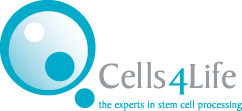This week we’re talking a look at some of the men and women who are pioneering the advancement of stem cell research.
Pablo Rubinstein founded the world’s first public cord blood bank in New York in 1992, since then public cord blood banks have been opened across the globe saving thousands of lives. Since that first cord blood bank opened, the treatments available with cord blood have increased and the research into its potential has expanded greatly.
Joanne Kurtzberg is a doctor at Duke University who famously works with umbilical cord blood to treat brain injuries, particularly cerebral palsy. Her work is still at research level but the results have been very promising indeed.
Of course there are several sources of stem cells in the body, while cord blood is often the preferred source for many treatments, many patients in need of stem cell therapy do not have access to their cord blood as the option to bank it was not available at their birth and it was discarded.
Researcher Geoffrey Raisman used stem cells from a patient’s olfactory bulb to repair spinal cord damage which enabled his paralysed patient to walk again. While this is very exciting research, it is incredibly early in its development but nonetheless, pioneering.
Another of our featured stem cell pioneers this week is Dr. Anthony Atala who uses 3D printers to print stem cells into organs; this pioneering work could revolutionise the organ donor register.
There are stem cell pioneers across the world who are working incredibly hard to turn what was once considered to be science fiction into science fact. Thanks to these pioneers, stem cell research is an incredibly exciting area of medical science making an incredible difference to the way we think about treating medical conditions and also changing the lives of people around the world.









